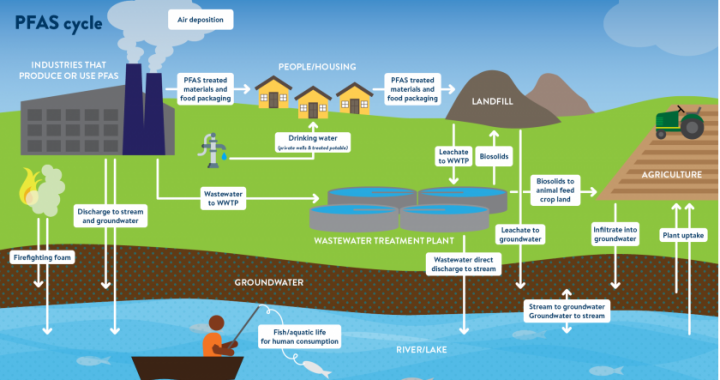Two major industrial trends have cast a long shadow over the environment during my working lifetime. The first was the idea of built-in obsolescence which developed in the 1970s. More recently, this has been dubbed premature obsolescence. After the MAD men persuaded us to buy our first fridge, tv, or car, suppliers needed to make sure we kept coming back for more. This trend was eventually partially superseded by advancements in product design and performance so that nowadays, it is more common to replace something because the next generation is better than just because a component has worn out. Eventually, the EU legislated and has now introduced the ‘Right to Repair’. The consumer can expect to have appliances repaired and manufacturers are encouraged to design their products accordingly. Hopefully our future products will last longer.
The second and more pernicious trend has been the almost polar opposite in which chemical components are designed to last for generations, certainly well beyond a normal lifetime of a product. Thus, while our products are designed to be replaced every few years, many key chemicals are non-biodegradable and persist for decades or even centuries. These compounds are known as Emerging Contaminants or Persistent Organic Pollutants. Colloquially they are referred to as ‘Forever Chemicals’ since they have been developed to persist in the environment and are not easily broken down by microbes. The most famous of these is DDT which was featured Rachel Carson’s Silent Spring 60 years ago.
Unfortunately, the modern “Forever Chemicals” are far more numerous, widespread and of greater concern since they are woven into the fabric of modern existence. First introduced commercially by Du Pont in Teflon after the 2nd World War, they have proliferated to a class of more than 7000 compounds. In 2000, 3M noticed that a key component in their famous Scotchguard, ie perfluoro-octanesulfonic acid (PFOS) was present in the blood samples of one of their staff members. It turned out that all of us have this chemical in our blood.
Since then, a host of related fluorinated compounds per and polyfluoroalkyl substances (PFAS) have also been discovered in our bodies and in the environment, and are widely present in water sources and our water supplies. These chemicals are designed to persist and will be exceedingly difficult to deal with in the long term as they continue to build up in the environment. There are concerns that they are responsible for various human health impacts including the steep fall in fertility. Ultimately, we will need to develop a new generation of green chemistry which will circumvent this dangerous trend, but in the meantime we have will have to deal with the impacts.
The water industry is beginning to react to this threat. In the last few years, a new acronym has emerged – Persistent Mobile Toxic substances (PMT). This includes PFAS and other compounds which are soluble in water but designed not to degrade in the environment in <60 days, and therefore are not amenable to wastewater treatment. According to Professor Terry Collins, Terrence J. Collins – Department of Chemistry – Mellon College of Science – Carnegie Mellon University (cmu.edu), PMTs pose a more serious threat to mankind than climate change since we do not yet have technical solutions to remove them or address their impact.
Du Pont recently announced that it has put aside $4bn to cover future claims and the European Union is expected to issue a ban in the next few years for all but essential use of forever chemicals. Several companies have announced technology for the removal and/or destruction of the compounds. However, the challenge remains great and will become one of the dominant issues for water treatment in the next decades. RO, adsorption, and oxidation technologies may all have a role to play. The question is whether to target the wastewater source or the drinking water output or both.
Simon Judd and I are hosting a Q&A session, Discussing membrane technology:… | Judd Water & Wastewater Consultants, on 14th April at 3pm UK time to discuss pressing issues for contaminant removal using membranes and MBR; PFAS will be one of the topics covered. The session is free and is designed to promote discussion and information sharing. Hope to see you there.

